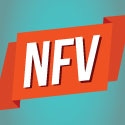SBC and wireless access gateway are available as VNFs now, with the messaging platform, app server, WebRTC gateway and call session controller to follow in 2015.

ORLANDO -- Genband Perspectives 2015 -- Genband gave more clarity on its roadmap for NFV at its conference this week, noting that its SBC and wireless access gateway are available as virtual network functions now, with its messaging platform, app server, WebRTC gateway and call session controller to follow in 2015.
In years past, Genband Inc. 's biggest priorities have been shedding its image as a legacy box provider and positioning itself as a fully software-focused company. CEO David Walsh sees that job as done as legacy now represents less than 10% of the networking vendor's business. (See Genband Goes Virtual at (Actual) Show and Pulling the Strings at Genband.)
As such, the company had a lot more to say this year about NFV than it has in previous gatherings, when the company line was that the entire portfolio was "virtualization ready." In fact, Genband provided an outline for its NFV roadmap that will see all of its major functions virtualized before the end of the year. (See Verizon Saves 60% Swapping Copper for Fiber.)
"Everything that can be virtualized will be," Walsh said. "The stuff that can, we're already down that path. Everyone wants independence and to choose their own hardware, choose their own suppliers and data center operators."
Figure 1: 
Want to know more about NFV? This will be just one of the many topics covered at Light Reading's second Big Telecom Event on June 9-10 in Chicago. Get yourself registered today or get left behind!
Genband began technical trials of its session border controller (SBC) in the third quarter of last year. Mark Pugerude, Genband's president of global sales, said that separating the media function from the core of the SBC fits well with its customers who need to distribute signaling around their large data centers. "When you separate brawn and media from the SBC, you can operate those in a completely different environment," he explained. (See Genband Starts NFV Push With Distributed SBC.)
"The market is defining itself with the orchestrator," Pugerude added. "Who will provide that? We're working with all the top companies around the world to make sure we're a participant."
CEO Walsh said Genband's QUANTiX wireless access gateway is also available as a VNF today as well. And, before the end of the year, it plans to virtualize its converged intelligent messaging platform Experius, application server, WebRTC gateway SpiDR and its call session controller. (See Genband Builds Out Its Mobile Strategy, Genband Unifies Its Enterprise UC Story and Genband Builds a Gateway to WebRTC.)
In a later presentation, John McCready, EVP of products & corporate development at Genband, noted that what ties all this together is Genband's VNF manager. All of the aforementioned functions work the same way whether on dedicated hardware or NFV, but the VNF manager lets an operator manage and control its virtual elements, scaling them up and down as needed, adding SBCs or applying analytics. If there is a higher-level orchestration layer, the VNF manager will tie into it and give a direct command of virtualized elements, he said.
"We see NFV settling some very big problems," Pugerude added. "It gets you out of the proprietary hardware business … no need to waste money on it. Most importantly, it's the cadence and pace at which you upgrade the network. You are not staggering it with multiple devices and technology. One of our goals with NFV is not only an alignment of interest, but actually ease of use. That's why we are completely dedicated to building our entire ecosystem and software into an NFV-type architecture."
— Sarah Thomas, 

 , Editorial Operations Director, Light Reading
, Editorial Operations Director, Light Reading
About the Author(s)
You May Also Like











